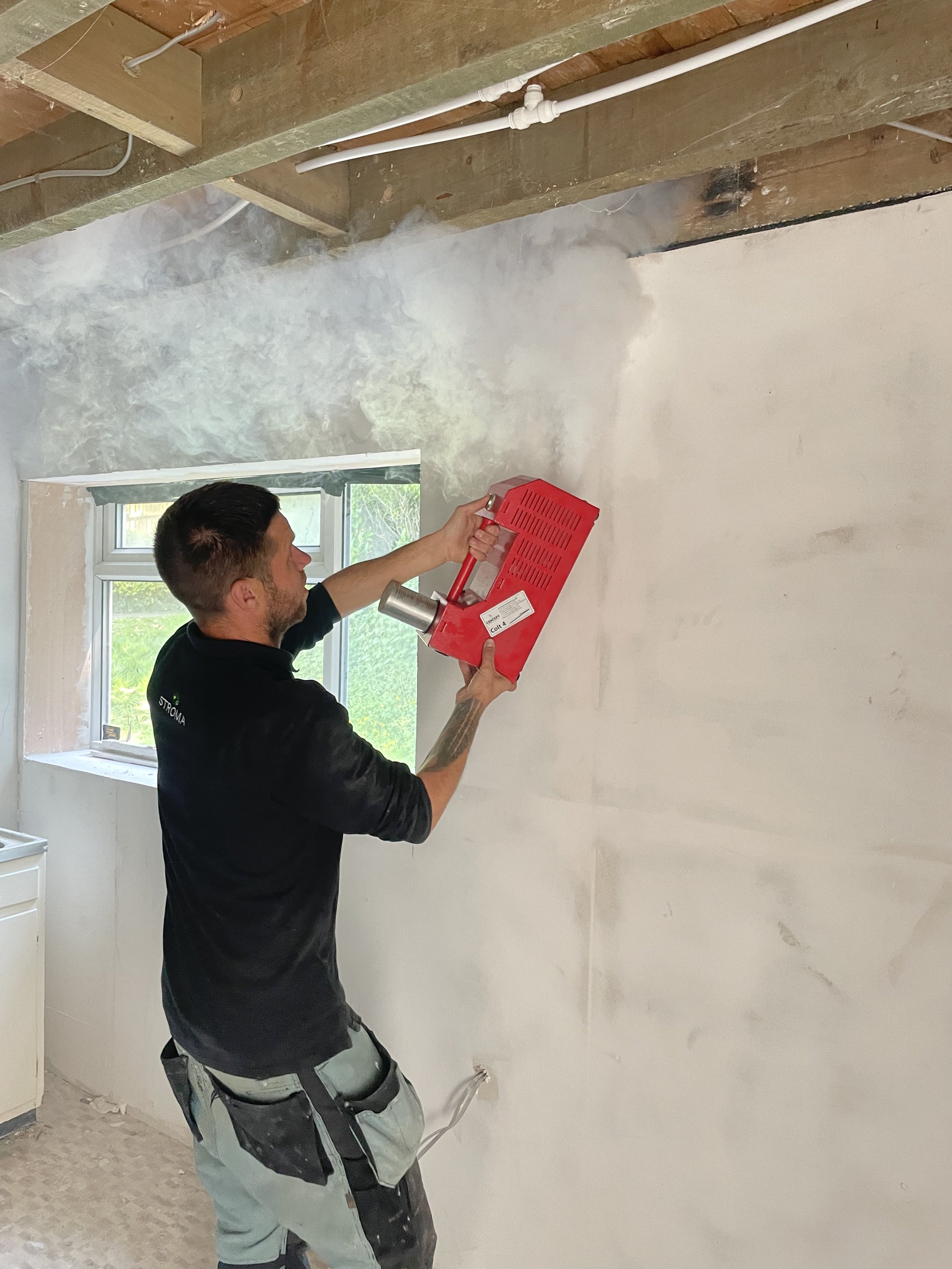The Crucial Connection: Airtightness, Ventilation, and Energy Efficiency
Delivering airtightness with controlled ventilation are the cornerstones of achieving energy efficient, healthy homes. We explore why the careful management of these factors is essential for energy saving, comfort, mould risk mitigation, and reducing fuel poverty.
Energy Saving:
Heat Loss Prevention: More commonly referred to as draught proofing, acts as a barrier against unwanted air leakage, preventing heat from escaping the home during colder months. This, in turn, reduces the need for constant heating, leading to substantial energy savings and lower energy bills.
Energy-Efficient Homes: Properly insulated and airtight homes are more energy-efficient. You can invest in measures like double-glazed windows, insulation, and draught detection and proofing to enhance airtightness, thus creating an environment that requires less energy for heating and cooling.
Smoke testing being carried out to find air leaks
Comfort:
Temperature Regulation: Airtight homes provide better control over indoor temperatures, ensuring a more comfortable living environment. By sealing gaps and cracks, you can regulate the flow of cold or warm air, maintaining a consistent and comfortable temperature throughout your home.
Reduced Drafts and Cold Spots: Airtightness not only prevents heat loss but also eliminates drafts and cold spots, this can enhance the overall comfort of your home significantly. Proper insulation and airtight construction contribute to a more enjoyable living space, free from the discomfort associated with temperature variations.
Thermal images showing draughts entering around a window
Managing Mold Risk through Controlled Ventilation:
Condensation Control: Adequate ventilation is essential to control indoor humidity levels and prevent condensation. Poorly ventilated homes can experience condensation, creating an environment conducive to mould growth. Airtightness, coupled with proper ventilation, helps manage moisture and minimizes the risk of mould development.
Indoor Air Quality: Effective ventilation systems such as trickle vents and continuous mechanical extract fans in your kitchen and bathrooms (DMEV) can help to effectively regulate moisture levels in most homes. For properties that have very high levels of airtightness, systems such as mechanical ventilation with heat recovery (MVHR), helps to ensure a constant supply of fresh air while expelling stale air. This not only prevents mould but also improves indoor air quality, creating a healthier living environment.
Trickle vents and vented chimney stacks will help to avoid damp and mould
Reducing Fuel Poverty:
Lower Energy Bills: The synergy between airtightness and ventilation directly contributes to lower energy consumption, resulting in reduced energy bills. For households struggling with fuel poverty, implementing measures to improve airtightness and ventilation can alleviate financial burdens associated with heating and cooling homes.
Government Incentives: The UK government offers various incentives and grants for homeowners to improve energy efficiency, including measures related to airtightness and ventilation. Taking advantage of these programs can further help reduce the overall cost of implementing energy-saving measures.
Attention to key details during a renovation for good levels of airtightness
In conclusion, the careful balance between airtightness and ventilation is a key consideration for residents. Beyond energy savings and comfort, the management of these factors plays a critical role in mitigating mould risk and reducing fuel poverty. As the push for sustainable and energy-efficient homes continues, homeowners should prioritise measures that enhance airtightness and ventilation to create healthier, more cost-effective living spaces.
At Wrapt, we are acutely aware of the need to deliver solutions that are balanced and cover off all of the benefits and risks of making our homes better places to live. In the pursuit of creating energy-efficient, comfortable, and healthy living spaces, striking a balance between airtightness and ventilation plays a pivotal role. Wrapt recently invested in a Leak Checker Diagnostics Fan (PAS2035 approved) to ensure our projects and services deliver on performance.
Get in touch with us if you would like to discuss how to achieve optimal energy efficiency for your home.




